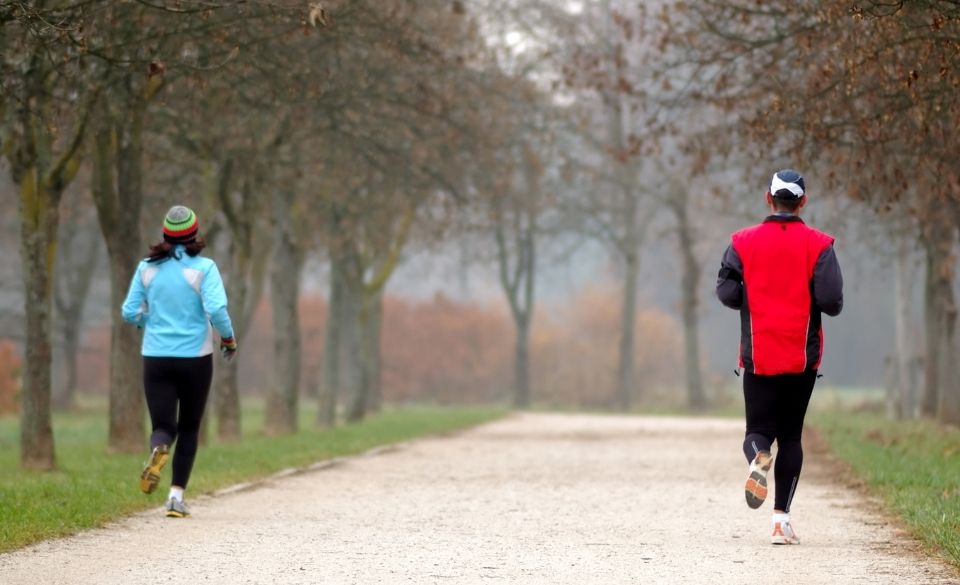
How To Slow Down Your Runs? A Guide to Recovery Runs
Page Contents
To get the most out of your training, it is important to vary your workouts. That means including intervals, tempo, long runs, and recovery runs into your training plan. However, many people forget the importance of slowing down your runs a few times a week. Many people end up trying to push the pace constantly and never allow proper recovery. However, this usually ends up causing fatigue, lack of motivation, and poor performance in the long run.
For some people learning how to slow down their runs a few times a week is difficult. People often feel like the workout is a waste of time or feel they are not getting the fitness benefits needed from that run.
However, running slow is an integral part of training. And in this article, we explain why recovery runs are important to your training and performance and why you should put aside a few days a week to run slow.
What Is A Recovery Run?
A recovery run is a run that focuses on recovery. That means it is an active form of recovery. For a session to be a recovery run, the distance and intensity need to be slower than your general running pace. Because the intensity is so low, your heart rate should be as low as possible and the speed of your run should be kept under control.
Recovery runs are typically done on flat roads or even on a treadmill. This allows the athlete to control the speed and intensity without causing spikes in heart rate.
The intensity should be at a point where you can have a full-blown conversation without any breathing issues.
Recovery runs usually follow a high-intensity or long run the day after. This helps to promote faster recovery, and better blood flow to the muscles. For some people, a recovery run can also be followed by some stretching, massaging, or foam rolling to help loosen the muscles and improve mobility.
If you are running three or four times per week, it is recommended one of those runs become a recovery run.
Alternatively, if you are training five or six days a week, two of these workouts should be planned as recovery runs.

Why Should You Run Slow In Your Training?
It is important to have days where you run slow in your training to help:
– Faster recovery
– Improve endurance
– Practice better running form
– Improve mobility
– Reduce stress
– Increase blood circulation
If you are training regularly, a slow run can help clear your mind and relax your body. It can also help improve consistency which plays a big factor in performance gains. Just cause you may not feel fatigued all the time, it doesn’t mean slow runs should be forgotten. The key is to think about fatigue build-up over time, and with the right amount of recovery runs planned into your training, you can prevent the build-up of fatigue over time.
How To Slow Down Your Runs?
For some people, it is easy to slow down their runs a few days a week. However, others struggle to reduce the pace. So, how do you slow down your runs? Below are a few tips to help you reduce the speed of your recovery runs.
1. Run with a partner
Running with someone else can help you keep the pace calm. Just like a faster run, having a partner join you on your training can help you hold the pace, push past your comfort zone and complete the training. However, they are also beneficial when slowing down your runs.
2. Check your breathing
To know if you are running slow enough, you can do a simple breath test. By holding your breath for 5 strides without changing your pace you will know whether you are running easy enough.
4. Run with a dog
Running with a dog will usually require you to ease back the pace. It can also help you to enjoy the run more and relax the mind and body.
5. Wear different shoes
Most runners have a collection of shoes. These can be shoes for intervals, tempo runs, or more stable shoes for your long runs. If you are doing a recovery run, stay away from your lightweight shoes and opt for the same shoes you use on your long runs. This will help keep the pace under control and not make you feel like you want to run faster or push the pace.
6. Use a heart rate monitor
By using a heart rate watch you can monitor the intensity of your run better. You can even set alarms that tell you if your intensity has gone above your planned workout. Just make sure you have the correct zones set up on your watch before heading out the door. Alternatively use a heart rate monitor to practice keeping your heart rate as low as possible.
Benefits Of Recovery Runs
Even though some people don’t see the benefits of recovery runs, there are many you will experience when you slow down your runs. These include:
– Improved motivation
– Improves running form
– Speeds up recovery time between workouts
– Help keeps the muscles supple
– Improves circulation
– Helps relieve stress on tendons
– Promotes mobility
Other important benefits include increased performance. When you allow an adequate recovery into your training plan, you will find that your workouts and recovery will improve greatly. This will result in a better workout, which will increase your performance in the long run.
Since recovery runs are shorter than all other workouts in your plan, it can also help you fit running into days where you don’t have time to do an interval workout or a long run.
To get the benefit out of your recovery run, it is important to keep the speed below 75% of your 5 km race pace. Alternatively, aim for the lowest heart rate you can if you don’t know your 5km race time.
If you don’t have access to a heart rate monitor or know your 5km time. There are some recovery run calculators online that can help you calculate the ideal pace for you.



